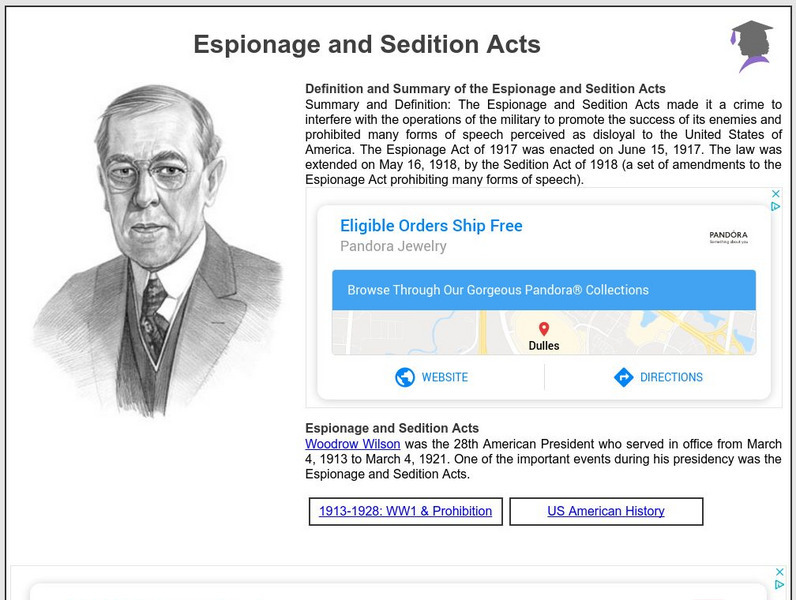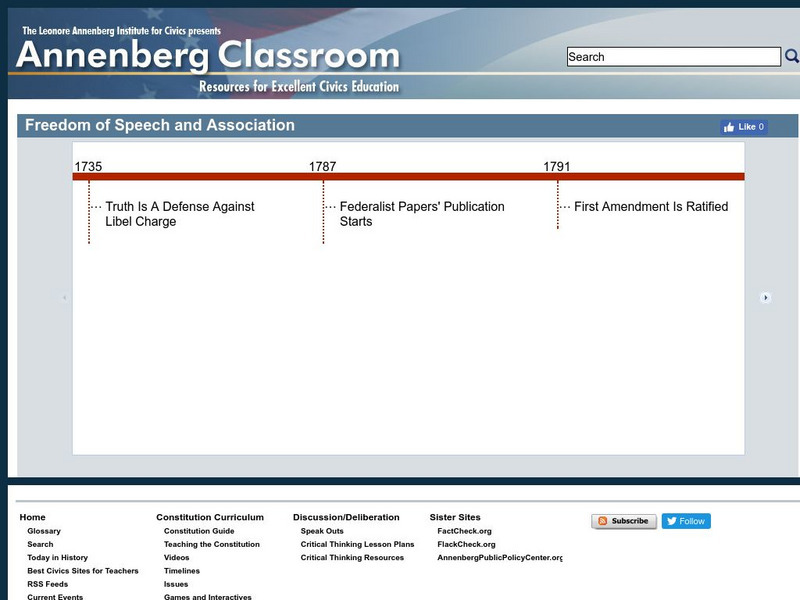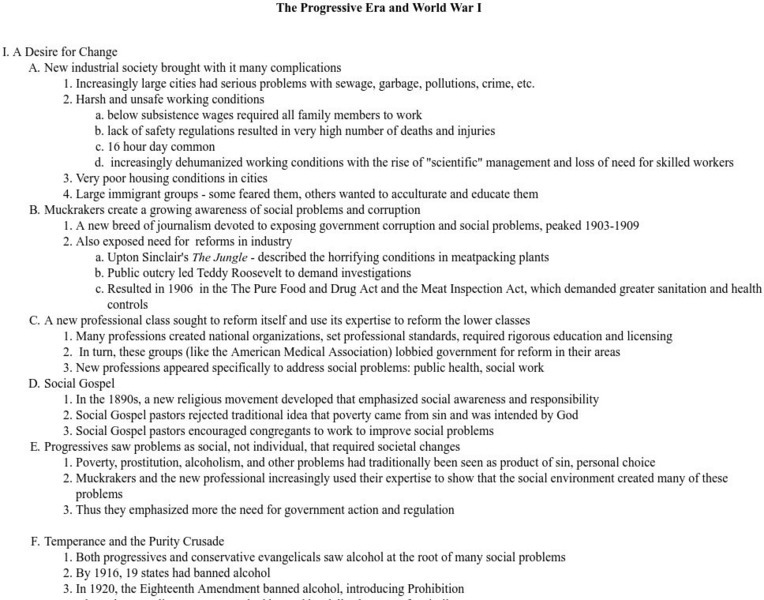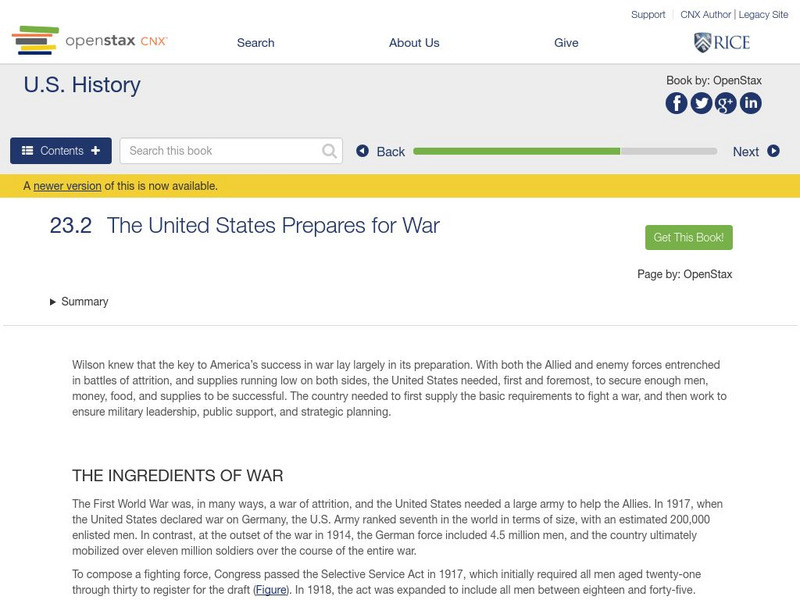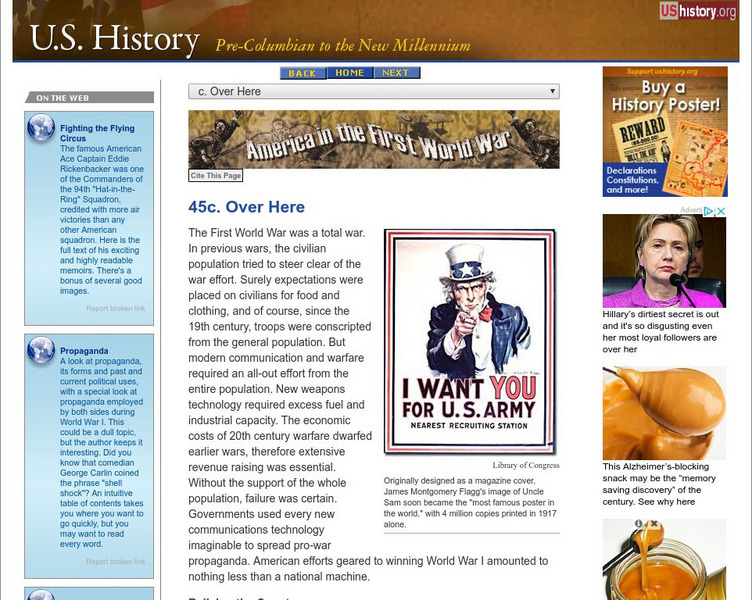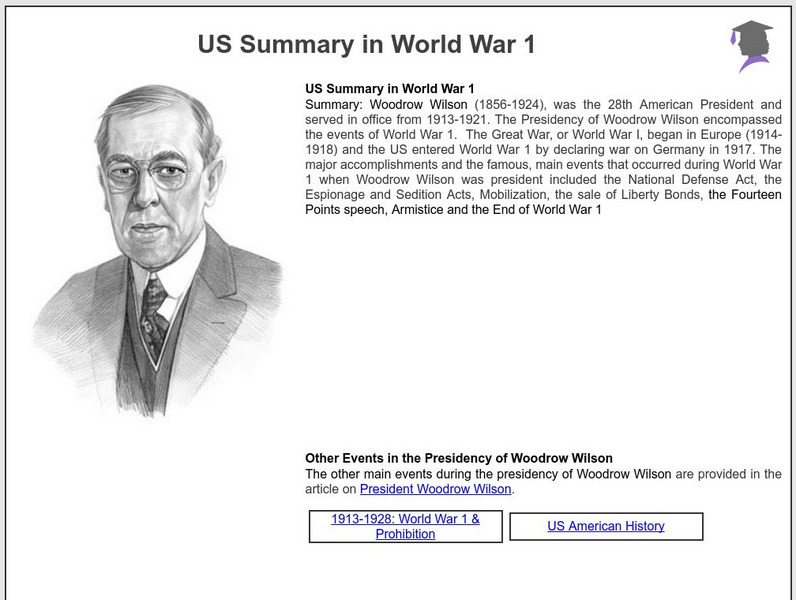Curated OER
Participating in Democracy
Students analyze film clips in class. In this democracy lesson, students identify the differences between civil liberties, democracy and freedom. Students view a video regarding Japanese internment and answer study questions as well as...
Curated OER
Chicago Tribune vs. US (1942): When Does Freedom of the Press Go Too Far?
Students define freedom of the press in peace and war time. As a class, they identify the need for the public to be informed, but discuss where the line should be drawn to protect national security. They develop their arguments and...
Curated OER
Cartoons for the Classroom: Censorship, Silencing an Anti-War Voice
In this primary source analysis learning exercise, students analyze political cartoons with anti-war messages and respond to 5 talking point questions.
George Mason University
George Mason University: The Espionage Act of May 16, 1918
The original text of Section 3 of the Espionage Act of May 16, 1918 is provided at this site.
PBS
American Experience: Espionage and Sedition Acts
As progressive a president as Woodrow Wilson was, when the U.S. joined World War I, he signed legislation that made it a crime to criticize the government. Read about the espionage and sedition acts that were passed and how they were...
Digital History
Digital History: Espionage and Sedition Acts
Suspension of civil liberties by the government is always a radial act. Read about why President Wilson and the Congress thought this was necessary upon the U.S. entrance to World War I, and see who really suffered from the enforcement...
Northern Illinois University
Ishs: The Espionage and Sedition Acts of 1917 and 1918 [Pdf]
From the 1994 spring volume of the Illinois Historical Journal comes this interesting and somewhat shocking account of how those who did not agree with the U.S. involvement in World War I were treated. Read how the basic right of freedom...
Boston College
Boston College: Schenck v. United States
Read the decision of this landmark Supreme Court decision involving the 1917 Espionage Act Schenck v. United States (1919).
Siteseen
Siteseen: American Historama: Espionage and Sedition Acts
Comprehensive overview presents detailed facts and information on the Espionage and Sedition Acts that made it illegal to write or speak anything critical of U.S. involvement in WWI.
Wikimedia
Wikipedia: Schenck v. United States
This encyclopedia entry summarizes the landmark Supreme Court case of Schenck v. United States, which pitted the right of free speech against the 1917 Espionage Act.
Annenberg Foundation
Annenberg Classroom: Freedom of Speech and Association
Check out this interactive timeline freedom of speech and association in the United States.
Khan Academy
Khan Academy: Ap Us History: 1890 1945: The United States in World War I
Discusses what triggered World War I, why the United States joined the war, and the impact the war had on life in the United States. Includes questions for students at end.
Other
Tsu: The Progressive Era and World War I
A comprehensive outline covering the major ideas, leaders, and actions of the Progressive Era and the transformation of the United States as a result of World War I.
OpenStax
Open Stax: Americans and Great War 1914 1919: The United States Prepares for War
Details what America did to prepare and execute its entry into World War I, and how the government used propaganda to win public support for the war effort.
Independence Hall Association
U.s. History: Over Here
World War I was not fought by Americans just in Europe. Read about the many ways people at home helped the war effort. See how badly German-Americans were treated as anti-German passions were fueled.
Siteseen
Siteseen: American Historama: Us Summary in World War 1
Summaries of events and major accomplishments surrounding President Woodrow Wilson, the United States, and World War 1.
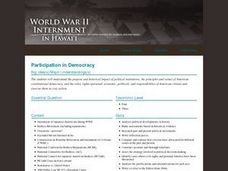
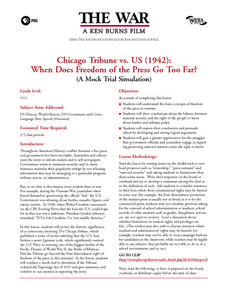

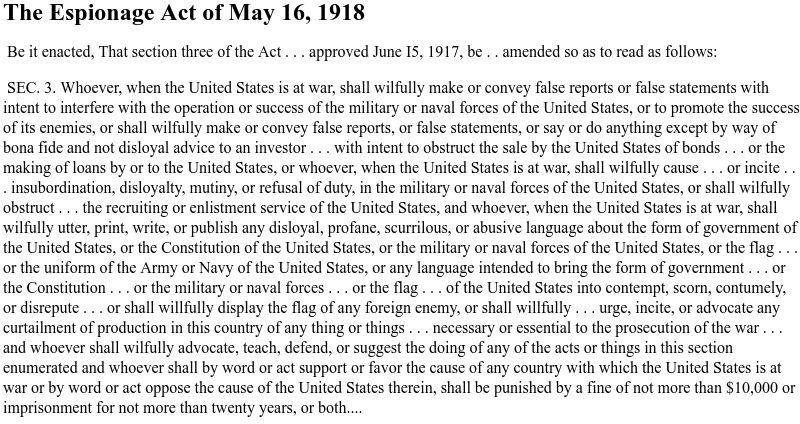

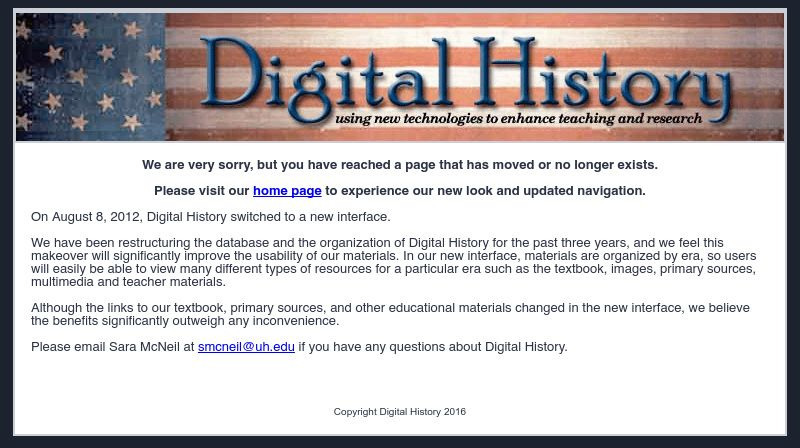
![Ishs: The Espionage and Sedition Acts of 1917 and 1918 [Pdf] Handout Ishs: The Espionage and Sedition Acts of 1917 and 1918 [Pdf] Handout](https://d15y2dacu3jp90.cloudfront.net/images/attachment_defaults/resource/large/FPO-knovation.png)

